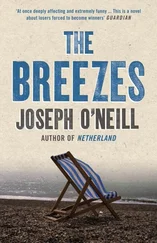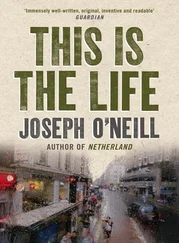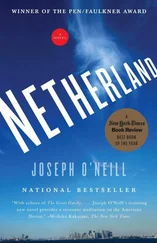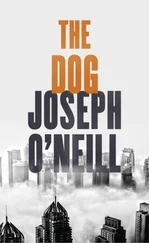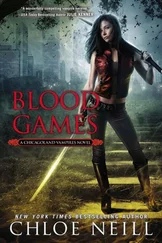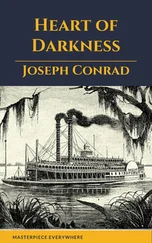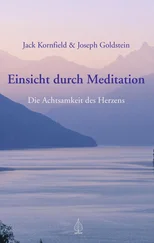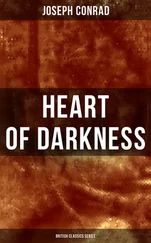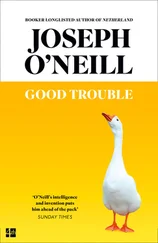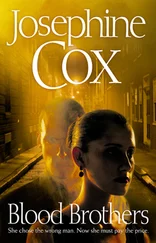After a while, we all strolled out to the front yard. ‘When Jim O’Neill used to visit the farm,’ Dan-Joe said, ‘he would walk straight past the house, go through the gate at the back and immediately walk the land.’ Dan-Joe gestured in the direction of a bare, muddy hill loomed over by a grey sky. Grandma pointed in the opposite direction, to the front garden. ‘That was where the orchard was. Jim always used to say to me that even when the Black and Tans were in Kilbrittain they’d hang a tricolour in the trees. In those days they’d burn down your house for that. But Kilbrittain was a hotbed and they never could stop people holding meetings here.’ Beyond the front garden, clearly visible a few miles below, was the green and rumpled ocean. The island known as Heart’s Rock was pointed out to me. ‘It was not far from there,’ Grandma said, ‘that the Lusitania sank.’
We said goodbye to the Hollands and drove away through the village. On our left we saw Kilbrittain National School, the tiny, two-roomed cottage, still in use, that was my grandfather’s sole alma mater. The schoolhouse enjoyed a clear view of the valley: a small river, some pastures flecked with sheep and crows. We headed out on the narrow road along which, seventy years before, my grandfather drove cattle to the Bandon mart, a tricky job since the cows would be through any gap in a shot.
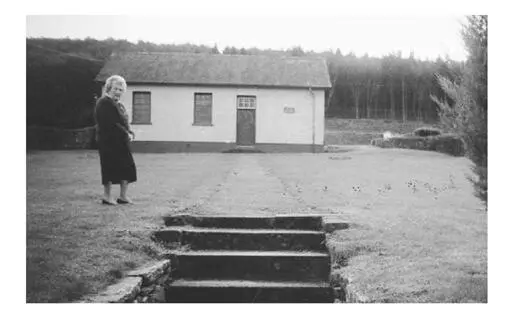
Grandma at Kilbrittain National School
A few days later, I drove through Bandon again, this time with uncle Brendan. We were going to Ardkitt. As a boy, Brendan travelled there on the railway. Sometimes the train back to Cork was used to transport salmon. The O’Neill brothers carried the fish in suitcases and would switch carriages during the journey to avoid detection.
Ardkitt (from the Irish, Kit’s Height, Kit — or Ceit — being a champion of ancient times) is the name of the hill over which the farm of the same name spreads itself in a series of fields bordered by hedgerows. With a maximum area of 55 acres, Ardkitt is, by the standards of the Bandon valley, by no means a large farm. To reach it, you turn from a small lane on to a still smaller lane which climbs the hill. On your left, as you gently ascend, a stream runs largely unseen down to a spot where steam engines formerly used to draw water. Two fields on that side of the road belong to the O’Neills. On the right side of the road is the farmhouse’s tree-lined front yard, which encloses a hedged, tree-filled garden; a stone pigpen (now in ruins); an old, stone cattleshed, where bulls used to be kept and cows milked; and the Victorian farmhouse itself, a pretty, whitewashed, two-storeyed stone building with a slate roof and yellow-painted trims to the windows and chimney-top and front door. Behind the house, a touch downhill, is the orchard of apple trees. Close by, accessible by a separate entrance, is a cottage that until recently was owned by the Lordans, our cousins. As with Graunriagh, the pastures of Ardkitt are only visible once you have tramped up to the crest of the land rising gently at the rear of the farmhouse.
Driving into the yard, we were greeted by the two friendly, barking dogs whose presence seems compulsory in country houses in West Cork. Pat O’Neill, son of the demonized Paddy and Brendan’s first cousin, welcomed us in and gave us tea and bread and jam. Pat was living on his own and his bowling trophies provided the principal decorative touch in the living room. This was not bowling of the lawn or ten-pin variety but road bowling, a traditional West Cork game of which the object is to propel, with a windmilling underarm action, a 28-ounce cast-iron ball along a given stretch of country lane in as few throws as possible. The sport requires a particular skill and strength, and Pat — long, low-slung arms, broad shoulders and enormous hands — had the right physique for it. When Pat stood with his fists pressed into his jeans pockets and his level shoulders in a hunch, Brendan whispered to me, ‘Look at him, that’s your grandfather there. That’s him now, that’s him exactly.’
I took a walk in drizzle beyond the house, up towards the fields. A large corrugated iron shed loomed on my left — the barn? — together with low outbuildings. Mud caked and sucked at my rubber boots. Just walking on this ground was a slog. Hundreds of small puddles pocked the mud. I made out the tracks of tractor wheels and cattle. There was no sign of cattle in the flesh. I came to the fields. They ran aslant the hill and were bounded by hedgerows that limited the distance you could see across Ardkitt. Still no cows. The rain started falling more heavily. I felt dull. Farming phrases I’d heard uttered by my father and his brothers in connection with childhood summers spent here before the feud with Paddy — threshing, mowing the fields, growing wheat and barley and oats, milking the cows, feeding the cows, pulling the flax (yes, in West Cork: local cultivation of flax was promoted during the Great Famine as a means of providing employment for the starving locals), picking mushrooms, making hay — failed to make sense of these wet, empty fields. And yet this was the site of golden memories for my father. He and the older O’Neill boys, who were no more than about ten years of age, took working holidays on the farm, and loved it from the moment they awoke in the Lordan cottage to the moment, at the end of the day, they washed their feet in the cold water of the well, which was in the Well Field across the lane from the farmhouse. A special treat for the boys was driving the donkey and cart down to the scutching mill in Enniskean, and of course the threshing day was a great day. The crop would be brought to the haggart — the yard by the cow-shed — and threshed in a steam-powered threshing machine equipped with a huge flywheel and spectacular driving belts. Wood from ash trees fuelled the steam engine, and my grandfather would carve hurleys for his sons from spare pieces of ash. The neighbours would help out, and so would children from Enniskean, mere blow-ins whom the O’Neill brothers, led by Brendan, would beat up. In the evening there would be a big dinner (turkey, goose, ham from the Ardkitt ham room, masses of potatoes), porter, and dancing to tunes made with an accordion and a fiddle. In the days immediately following the threshing day, Jim and his boys would go to the neighbouring farms and help out there. ‘It was idyllic,’ my father said. But all I sensed, standing on the brow of the hill in the rain, was that this was a place that exacted hard physical effort. I began to feel cold. I turned back through the muck to the house.
A short while afterwards, I got into the car to leave. Brendan was still talking to Pat by the front door of the farmhouse. Then Pat went into the house while Brendan stamped his feet at the threshold. A few moments later, Pat returned with a white towel in his hands. He handed the towel to Brendan. They laughed, and then Brendan came over to the car. Brendan got into his seat and slammed shut the driver’s door. He dropped the towel on my lap. I felt a weight amongst the folds. I unfolded the towel. A rusted revolver sat between my knees. I looked at my uncle. ‘Colt.45,’ he said, starting the engine. ‘That’s the gun that shot Admiral Somerville.’
… exaggerated suspicions are paranoic or true to reality, a faint private echo of the turmoil of history …
Theodor Adorno, Minima Moralia
In early January 1942, a freeze of a ferocity not seen for twenty years destroyed the citrus fruit crop of the Çukurova region. By February, only a few rotting specimens dangled in the gardens that surrounded Mersin.
Читать дальше
Конец ознакомительного отрывка
Купить книгу


